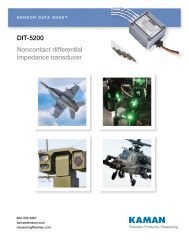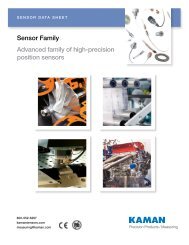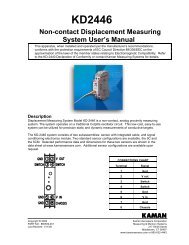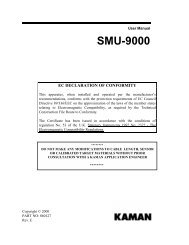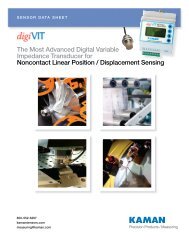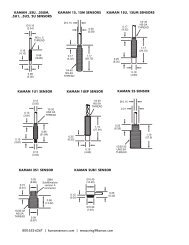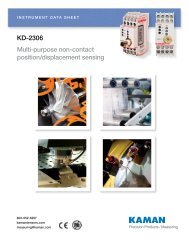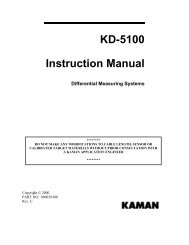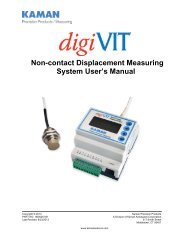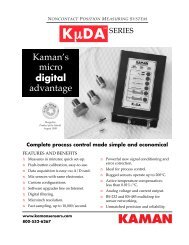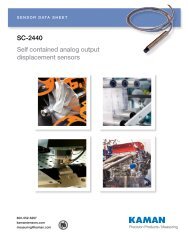DigiVIT User Manual - Kaman Precision | Position sensors
DigiVIT User Manual - Kaman Precision | Position sensors
DigiVIT User Manual - Kaman Precision | Position sensors
You also want an ePaper? Increase the reach of your titles
YUMPU automatically turns print PDFs into web optimized ePapers that Google loves.
4.1 Volt Out SetupThis option allows selection of the voltage output range from the system.The actual voltage will go 1% above or below the voltage output range selected if the sensor isabove or below the calibrated range.4.2 mA Out SetupThis option allows selection of the current output range from the system.The actual current will go 5% above or below the current output range selected if the sensor isabove or below the calibrated range. In the case of 0-20mA output, it will not go below zero.4.3 Cal SetupThis selection allows linearization calibration and temperature compensation. With theexception of the 2 Pt. or 3 Pt. Adjust (reference 4.8) all other calibration methods will zero outthe temperature compensation coefficients and any offset.4.4 Linearization Options3 options are available for linearization calibration, 2 point, 6 point and 21 point.Note: Performing a linearization calibration after a temperature compensation calibration willvoid the temperature compensation calibration. All linearization calibrations begin by locatingthe sensor at the maximum distance it will be from the target during operation. This is typicallythe sum of the offset distance and full scale range.4.4.1 2 Pt. CalThe 2 point calibration is useful if either linearity of the output is not a concern or if the sensor isoperated over a very short range. Ranges less than 10% of the standard range (a standardrange is normally 33% of the sensor diameter) typically will result in good linearity. For rangesbelow 5% of the standard range; this is the recommended method.To perform a 2 Pt calibration, the sensor needs to be position at MAX distance from the sensorface (i.e. full scale) so that it can optimize for a given sensor. After that, the sensor needs to bepositioned at only the offset (MIN) and full range (MAX) positions.Note: Any previous temperature compensation calibration will be voided when a 2 Pt. calibrationis performed.www.kaman<strong>sensors</strong>.com PART NO: 860525-001Last Revised 9/16/2013- 8 -




